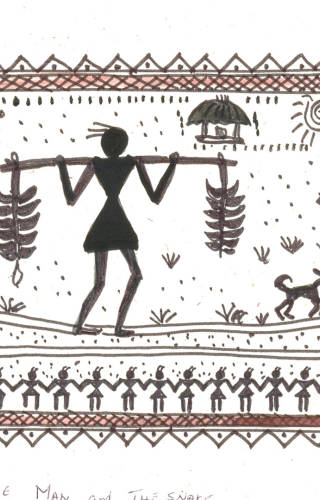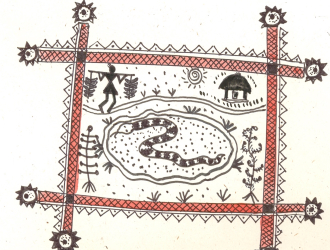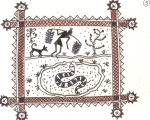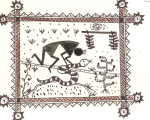Saora is the name of the tribe and their art. Saora (alternative names and spellings include Sora, Saura, Savara and Sabara) is an ancient Munda tribe from Southern Odisha, and north coastal Andhra Pradesh. They are also found in the hills of Jharkhand, Madhya Pradesh and Maharashtra. Known for their extraordinary architectural skills, Saora tribal paintings look exactly the same on the mud walls of their houses and on paper. Saora painting is done in black and white or mud brown and white. When mud brown decorative border poles are used as frames of the paintings, the drawings are done only in black and white. Small stick-like figures, dots and patches of black can serve as great narrative elements in Saora paintings (like in Warli paintings of Maharashtra), and long epic-length narratives of festivities can find depictions in a single Saora mud wall. Enam Gomango, an accomplished painter and a teacher from the Saora tribes of Odisha, narrates the story of a man and a snake in a series of paintings. Enam Gomango focuses on the action and the main characters involved in the action in his paintings, and his series moves logically according to the story. Some of us may be surprised to see how adequate the minimal representations of human beings, trees and animals in the Saora paintings evokes the real-life equals in our minds. Representational and minimal, Enam Gomango's art work hides his artistic skills in their evocative power.

















